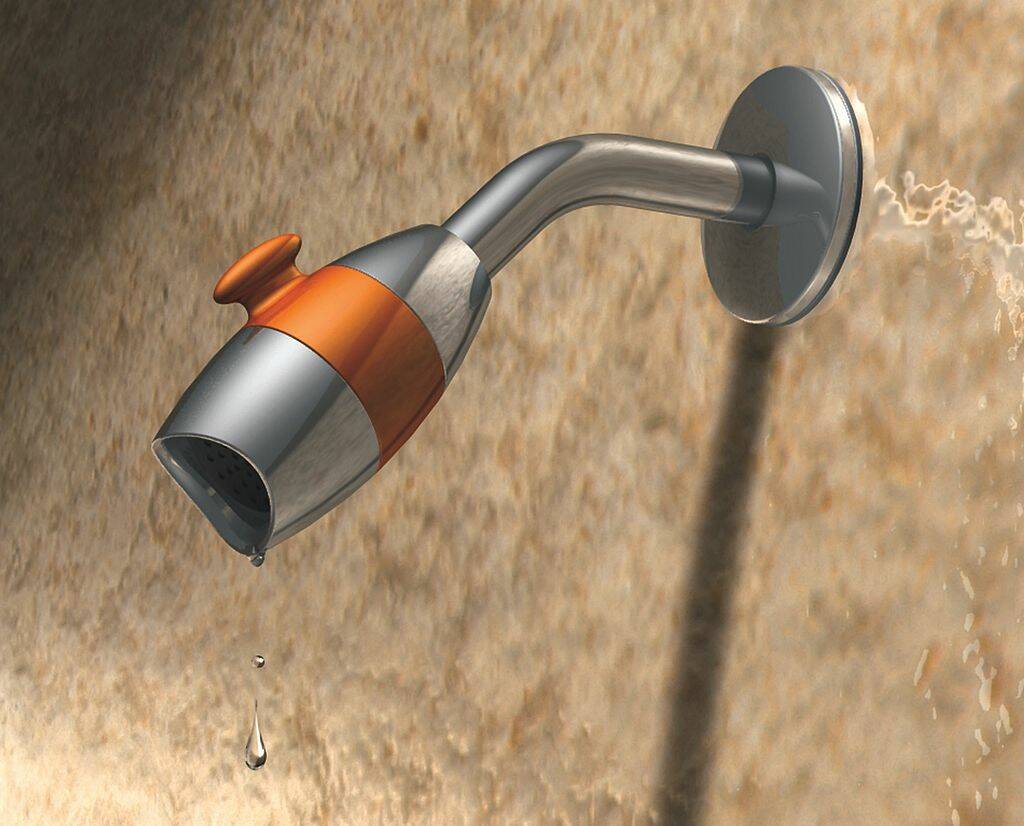New cartridge usually quick fix for dripping showerhead
Q: My showerhead drips water constantly, even when the tear-drop-shaped knob, which controls both hot and cold temperatures, is turned off. How can I fix this?
A: It sounds like what you have is a common problem that afflicts many showers each day: the dreaded Moen shower cartridge.
A shower cartridge is about the size of a roll of nickels and has holes and rubber washers all around it. It will take about 30 minutes to fix but will save lots of water as a result.
If you have to pull out the knob to start the flow of water, the replacement cartridge will cost about $30. If you simply turn the knob from side to side, you have a posi-temp cartridge, which costs about $55. You can find replacement cartridges at most home centers, but if they don’t have your particular type, try a plumbing supply store.
Now, let’s get to the repair. First, shut off the main water supply to the house. Open the shower faucet to let out the water pressure.
Using a small, standard screwdriver, gently pry off the shower knob cover. Under this cover is a screw that holds the knob onto the cartridge. Remove the knob.
Next, you will find the valve body, which is covered by a decorative escutcheon. Remove the escutcheon by gently pulling it straight out.
A retaining pin holds the cartridge in the shower body. This pin will have a nub sticking out of the top of the shower body. Grab a pair of pliers and pull it straight up.
The only thing left to do now is removing the actual cartridge. I recommend that you get your hands on a cartridge remover, which costs about $15. You also can try your luck with pliers, but the cartridge-removing tool is made just for removing cartridges.
Place the larger, hollowed end of the cartridge remover into the shower body and over the old cartridge. Tighten the screw on the end of the tool. This screw fits into the hole where your shower knob was, and it locks the tool into the cartridge.
When the ears of the tool are engaged with the ears of the cartridge, turn the tool — and consequently the cartridge — to break the cartridge free from years of torment. The cartridge will pull straight out.
Install the new cartridge simply by pushing it into the shower body with the ears in the 12-and-6 position. Push it in far enough so that when you replace the retaining pin, it slides completely into place and locks the cartridge in place.
Next, turn the water back on and make sure there are no leaks. Replace the escutcheon and the handle.
Now, test to make sure that the hot water side is hot and the cold water side is cold. All you need to do is remove the shower knob, take a pair of pliers and rotate the stem (the part of the cartridge that the shower knob screws into) 180 degrees.
The cartridge stays put, but the stem is free to rotate. It’s the knob and the escutcheon that restrict the movement of the stem.
I’m amazed at the number of people who believe this reversed-temperature problem means that they will have to re-plumb their shower. Maybe the next time someone presents this problem to me, I’ll grimace, shake my head, and ask them for a calculator. Once I see the sweat pouring from their heads, I’ll let them in on the easy fix.
Mike Klimek is a licensed contractor and owner of Las Vegas Handyman. Questions may be sent by email to handymanoflasvegas@msn.com. Or, mail to 4710 W. Dewey Drive, No. 100, Las Vegas, NV 89118. His web address is www.handymanoflasvegas.com.
Do-it-yourself
Project: Replace a shower cartridge
Cost: From around $40
Time: Under 1 hour
Difficulty: ★★★


















